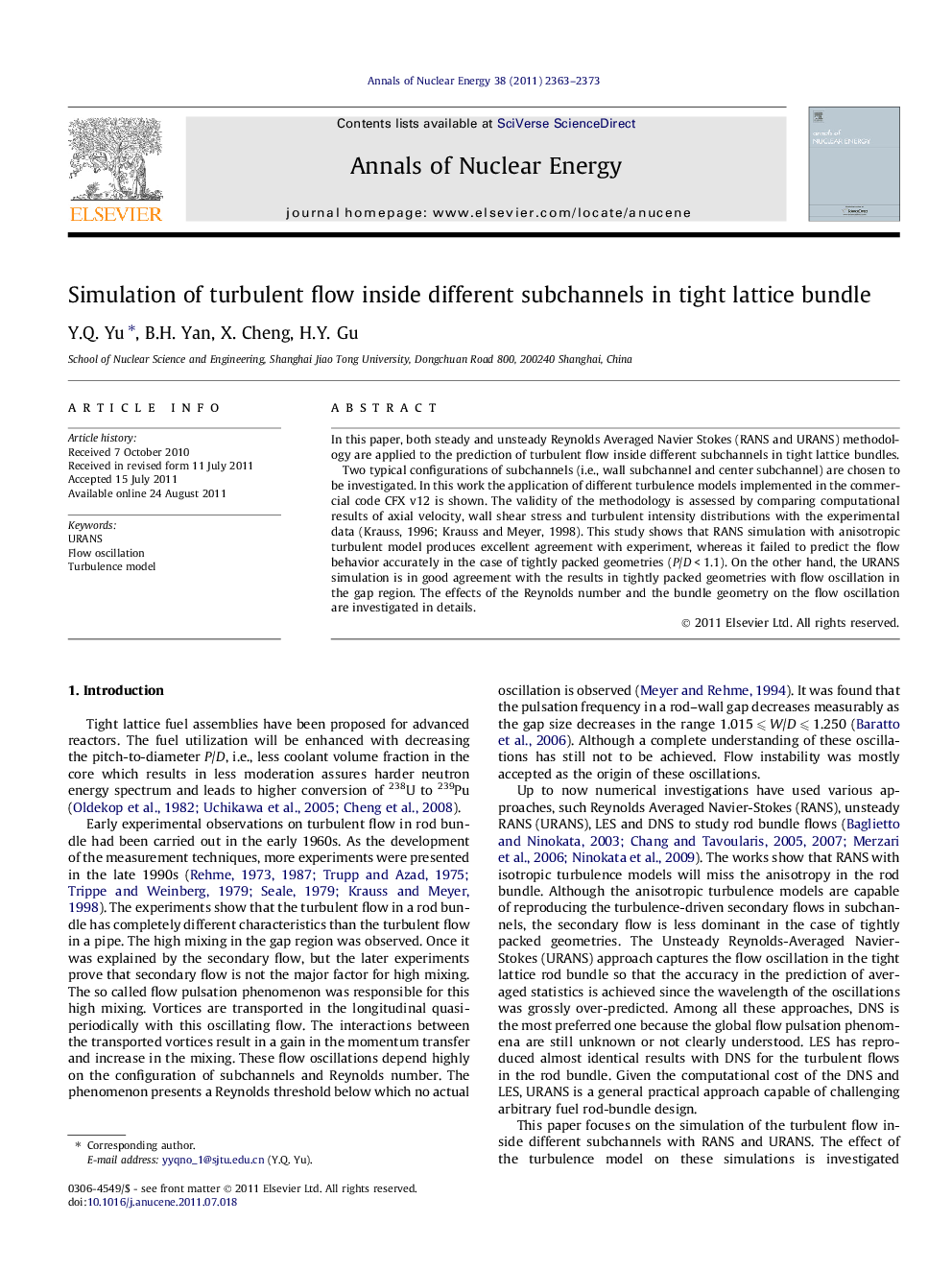| Article ID | Journal | Published Year | Pages | File Type |
|---|---|---|---|---|
| 1729167 | Annals of Nuclear Energy | 2011 | 11 Pages |
In this paper, both steady and unsteady Reynolds Averaged Navier Stokes (RANS and URANS) methodology are applied to the prediction of turbulent flow inside different subchannels in tight lattice bundles.Two typical configurations of subchannels (i.e., wall subchannel and center subchannel) are chosen to be investigated. In this work the application of different turbulence models implemented in the commercial code CFX v12 is shown. The validity of the methodology is assessed by comparing computational results of axial velocity, wall shear stress and turbulent intensity distributions with the experimental data (Krauss, 1996; Krauss and Meyer, 1998). This study shows that RANS simulation with anisotropic turbulent model produces excellent agreement with experiment, whereas it failed to predict the flow behavior accurately in the case of tightly packed geometries (P/D < 1.1). On the other hand, the URANS simulation is in good agreement with the results in tightly packed geometries with flow oscillation in the gap region. The effects of the Reynolds number and the bundle geometry on the flow oscillation are investigated in details.
► The results testify the applicability of computational method (URANS) to turbulent flow inside in tight lattice bundles. ► SSG and SAS turbulence model which is specifically designed for unsteady simulations is proposed for URANS methodology. ► The effects of the Reynolds number and the bundle geometry on the flow oscillation are investigated in details.
